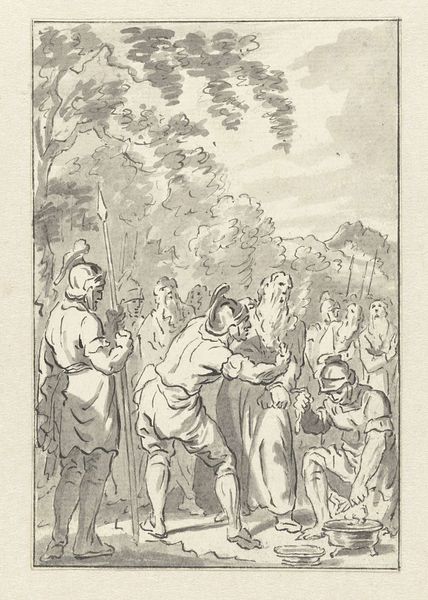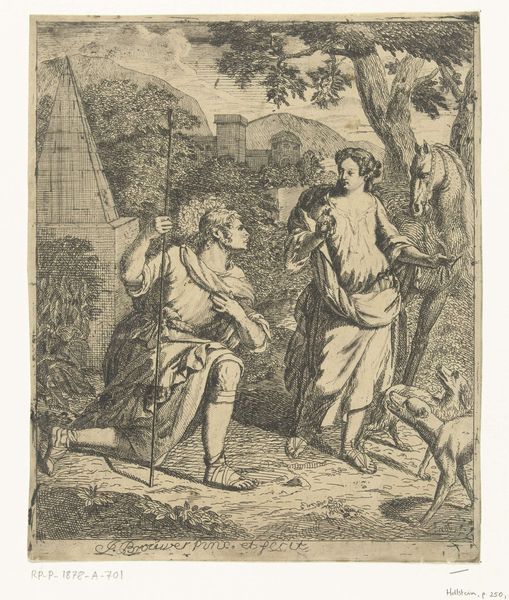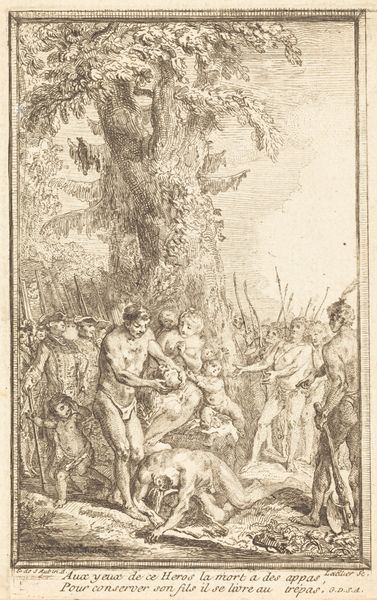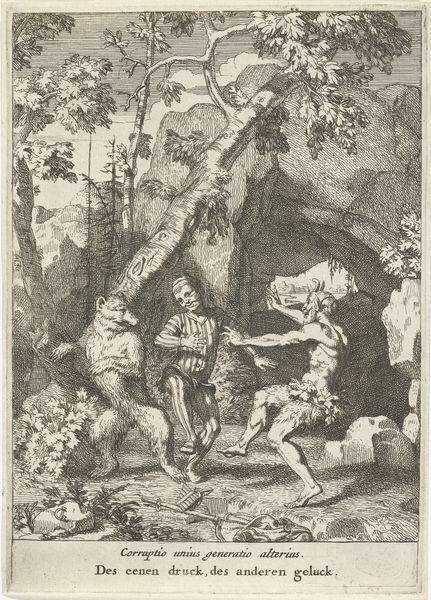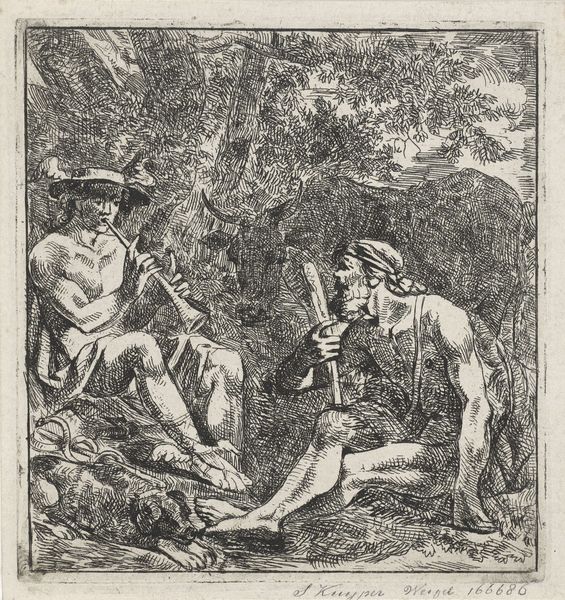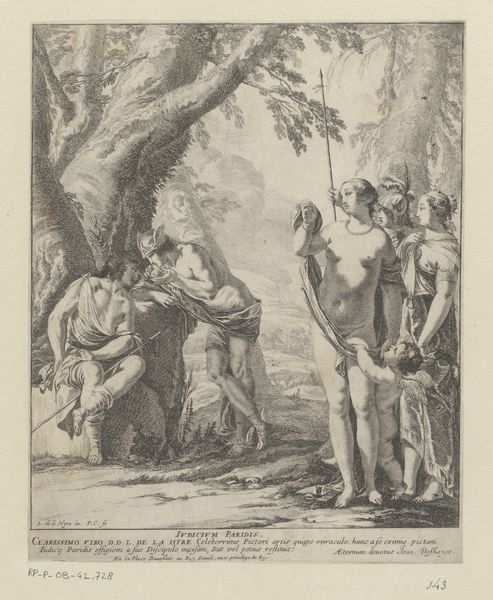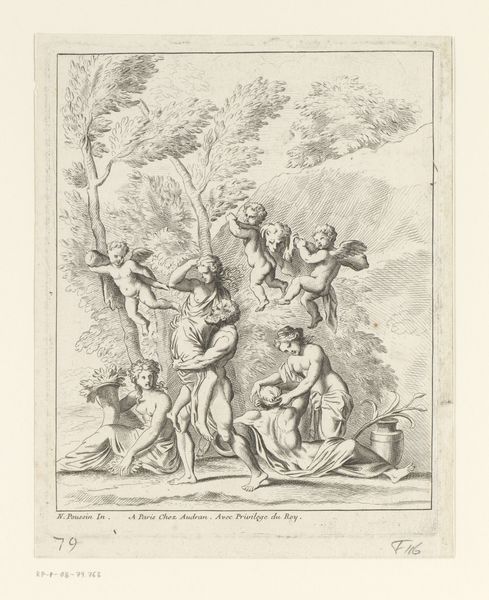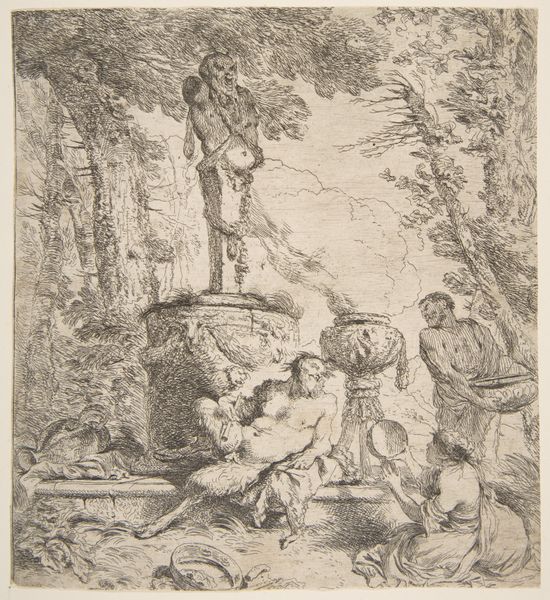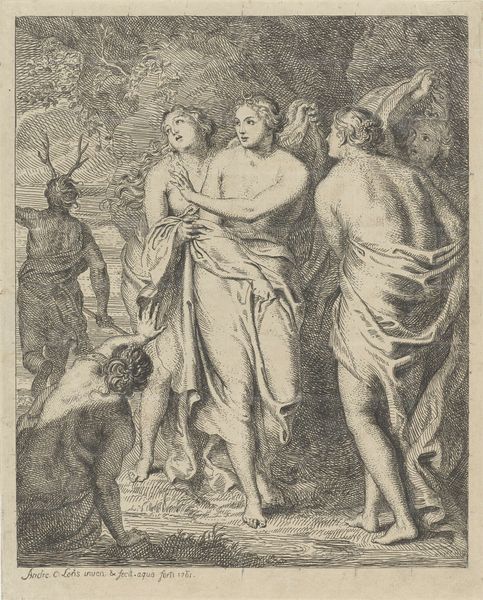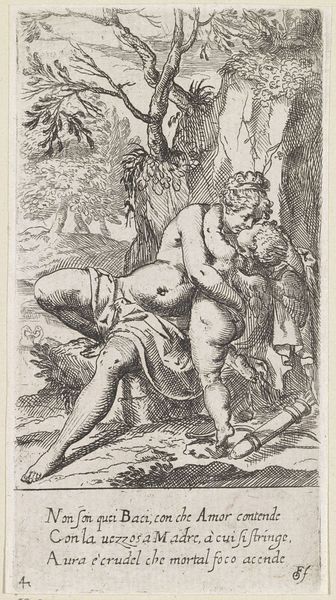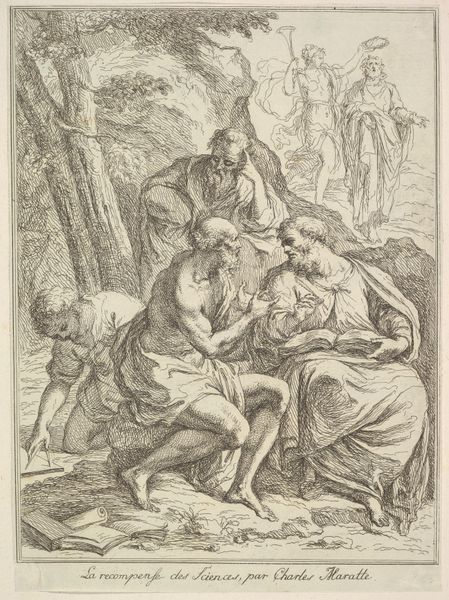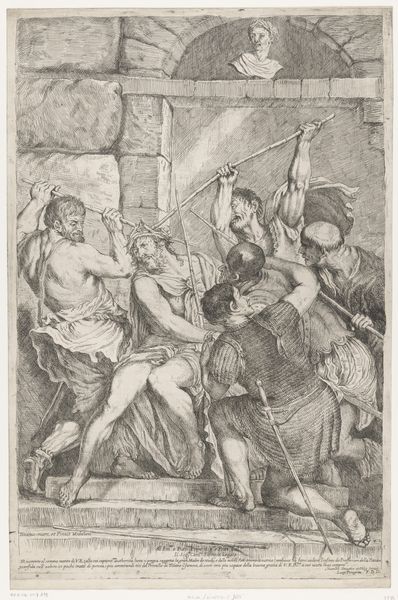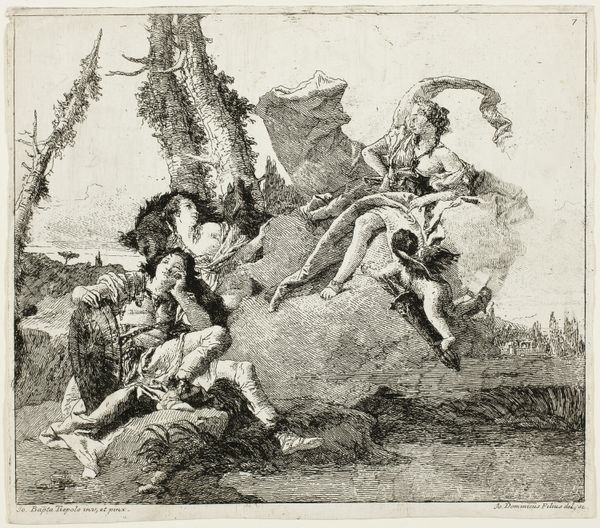
print, etching
#
narrative-art
#
baroque
# print
#
etching
#
figuration
#
history-painting
Dimensions: height 193 mm, width 165 mm
Copyright: Rijks Museum: Open Domain
Curator: Jan Lievens created this etching, “Mercurius brengt Argus met zijn fluitspel in slaap,” around 1625-1626. It’s currently held in the Rijksmuseum collection. Editor: It feels dramatic, even theatrical. The light and shadow create a heightened sense of drama. And there is almost something vulnerable in the faces of the figures, despite the underlying power dynamics at play. Curator: The piece depicts a moment from classical mythology, specifically from Ovid's "Metamorphoses." Mercury, or Hermes as he's known in Greek mythology, is sent by Jupiter to slay Argus, a giant with a hundred eyes who was tasked by Juno to guard Io, a nymph Jupiter had transformed into a heifer to hide her from his wife. Editor: It is heavy with symbolic weight, and that is something I find intriguing. You can practically feel the tension hanging in the air, can’t you? The flute acts as this instrument of manipulation, lullabying Argus into a state of vulnerability so that he is ready for demise. Curator: Absolutely. And it speaks to the visual culture of the time. Prints like this one disseminated classical narratives far and wide. This also offers insight into how societal values regarding power and control are reflected and reinforced through artistic representation. Editor: Considering how the church utilized stories from the Bible to create obedience to their rules, this work appears in that tradition as well, right? But here we have a more dangerous god leading humans into obedience by sleep—it's insidious. This idea that stories told—art created—can have manipulative power remains extremely relevant in contemporary life. Think about political propaganda or even advertisements... Curator: Indeed. And even the very act of portraying it. It also raises a question of Lievens' own position on authority, on the roles of men in Dutch society... How was Lievens engaging or subverting norms by taking on a subject like this? Editor: It almost acts as a subtle challenge. I am now left thinking how Lievens himself positions himself to these mythologies, to other stories he relays through his art? Food for thought, for sure. Curator: Precisely. Its enduring value rests on its formal qualities and in its reflections of how visual narratives can be vehicles for power, morality, and social reflection across historical contexts.
Comments
No comments
Be the first to comment and join the conversation on the ultimate creative platform.
